Medication
ICD criteria for drug dependence
The ICD-10 lists six criteria, three of which must have occurred simultaneously in the past 12 months for a diagnosis of drug dependence to be made:
- Strong desire or compulsion to use the addictive substance.
- Limited control over initiation, cessation and quantity of use
- Withdrawal symptoms upon reduction or cessation of use;
- Use to alleviate withdrawal symptoms.
- Development of tolerance: increasingly higher doses are required to achieve a consistent effect
- Increasing neglect of other activities and interests in favour of use Continued use despite evidence of consequential harm
Drug group according to ICD 10
- Opoids: F11.x
- Sedatives/ hypnotics: F13.x
- Other simmulants: F15.x
Indications of problematic consumption (Poser et al.1983, König u. Laux 1985)
- Procurement of medication by third parties
- Procurement of drugs by private prescription for patients with statutory health insurance
- Prescription forgeries, drug smuggling and drug theft
- uncritical euphoria
- dysphoric-depressive mood as a consequence of medication
- reversal of the effect: sleeping pills are needed to become more awake
- Sourness, loss of critical faculties, affective levelling etc. as a consequence of medication
- paradoxical effect (motor excitement due to sedatives/hypnotics)
- concentration disorders, amnesia and confusion
- Apparently inexplicable but typical intoxications (ataxia, dysarthria, nystagmus)
- Appetite disorders, rather in the sense of lack of appetite
- Signs of neglect with poor personal hygiene
Brief intervention
For the medical and nursing staff, discussions with affected patients about addictive substance use are therefore rarely purposeful and are often experienced as frustrating.
Learn moreConsultation service
In our prevention outpatient clinic for addiction you can get help and answers to questions about intoxication with alcohol, medication or illegal drugs as well as tobacco addiction.
Learn moreDrugs
General information
Epidemiology
On the basis of scientific studies, the number of manifestly drug-dependent people in Germany is estimated at approx. 1.4 - 1.9 million. In about 80 % of the cases, this involves a dependence on benzodiazepines. In addition, a comparable number of people are considered to be at medium to high risk of developing a drug dependence.
In a representative survey of the adult German population, 4.3% of respondents showed evidence of problematic or already dependent drug use. The percentage of at-risk or dependent women was significantly higher than that of men (5.5 % vs. 3.2 %). 16.8% of the adult population reported taking a psychotropic medication at least once a week in the same survey. The problematic use of medicines increases - statistically - continuously with age, therefore an even higher proportion of drug addicts is to be expected in the group of people over 60 years of age. (Source: German Medical Association, 2007)
In Germany, there are currently about 50,000 different drugs on the market. Of all the medicines prescribed, about 5-6% have their own potential for abuse and dependence. When prescribed and used appropriately, the risk of abuse or development of dependence is considered to be low. However, an estimated 30-35% of medicines with abuse or dependence potential are not prescribed for acute medical problems but in the long term to maintain addiction and avoid withdrawal symptoms.
Major drug groups
The most important drugs with a high dependence potential in terms of their distribution belong to the group of hypnotics/sedatives, as well as to the group of analgesics. Benzodiazepines make up the largest proportion of drugs prescribed in Germany from the hypnotics/sedatives group.
The general hospital is a place which, for various reasons, offers excellent conditions for the initiation of interventions with drug addicts. A proportion of those affected experience withdrawal symptoms for the first time during hospital admission. The inpatient stay represents a vulnerable or "teachable moment", which means that the affected persons are particularly receptive to offers of help and the willingness to change is increased.
Hospital and drug addiction
The general hospital represents a place which, for various reasons, offers excellent conditions for the initiation of interventions with drug addicts. For some of those affected, withdrawal symptoms appear for the first time during hospital admission. The inpatient stay represents a vulnerable or "teachable moment", which means that the affected persons are particularly receptive to offers of help and the willingness to change is increased.
Common preparations
- Alprazolam (Tafil®)
- Bromazepam (Lexotanil®)
- Brotizolam (Lendormin®)
- Chlordiazepoxide (Librium®)
- Clobazam (Frisium®)
- Clonazepam (Rivotril®)
- Clotiazepam (Trecalmo®)
- Diazepam (Faustan,Valium®)
- dipotassium clorazepate (Tranxilium®)
- Flunitrazepam (Rohypnol®)
- Flurazepam (Dalmadorm®)
- Halazepam (not on the market in Germany)
- Ketazolam (Contamex®)
- Loprazolam (Sonin®)
- Lorazepam (Tavor®)
- Lormetazepam (Noctamid®)
- Medazepam (Rudotel®, formerly Nobrium®)
- Metaclazepam (Talis®)
- Midazolam (Dormicum®)
- Nitrazepam (Mogadan, Radedorm®)
- nordazepam (Tranxilium N®)
- Oxazepam (Adumbran®)
- Oxazolam (Tranquit®)
- Prazepam (Demetrin®)
- temazepam (Planum®, Remestan®)
- Tetrazepam (Musaril®)
- Triazolam (Halcion®)
Certificates and Associations

Focus: Top National Hospital 2025

Stern: Germany's Outstanding Employers in Nursing 24/25

Quality partnership with the PKV

Family as a success factor

Pension provision for the public sector





